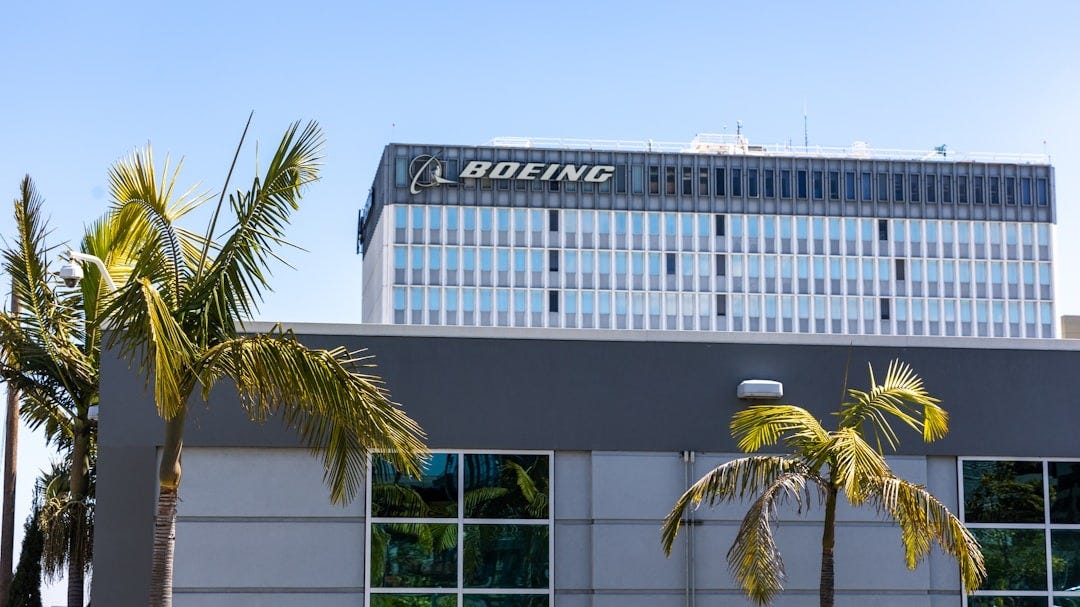Boeing Offers Final 30% Wage Hike: Workers Demand 40%
Boeing's Final Offer Amid Ongoing Strike: A 30% Wage Hike and More Perks.

Disclaimer: This article is for informational purposes only and does not constitute financial or legal advice. Readers should consult with a professional for advice specific to their circumstances.
Boeing has extended what it describes as its "best and final" offer to over 32,000 striking workers. This offer comes at a crucial point in negotiations with the International Association of Machinists and Aerospace Workers (IAM), a union representing employees who are essential to Boeing's production capabilities. The strike, which began on September 13, has already started to impact Boeing's operations and finances notably. Here, we explore the details of the offer, the union's response, and the broader effects for both the company and its workforce.
Details of Boeing's Offer
This walkout represents Boeing's first major labor disruption since 2008, initiated after an overwhelming 96% of IAM members voted in favor of the action. The central issues in this dispute revolve around wage increases and benefit enhancements, with workers initially seeking a 40% wage hike, alongside the reinstatement of a previously suspended performance bonus. This labor unrest aligns with a broader trend across North America, where tight labor markets have empowered unions to demand more favorable terms at the negotiation table.
Boeing's latest proposal includes a 30% general wage increase spread over four years. This offer is an improvement from the company's initial proposal, which included a 25% wage increase. In addition to the wage hike, Boeing has pledged to double the ratification bonus to $6,000, a move aimed at making the deal more appealing to union members considering the offer's merits. The offer also involves the renewal of the Aerospace Machinists Performance Program (AMPP) bonus, substituting contributions to an IAM 401(k) plan with enhanced retirement benefits.
Boeing has committed to increasing its match on employee 401(k) contributions to 100% of the first 8% an employee contributes, along with a continued automatic 4% company contribution. The offer also retains commitments made in a prior tentative agreement, including the assurance that Boeing’s next new airplane would be manufactured in the Puget Sound region and Portland.
Union's Response
The union has responded with cautious consideration. Brian Bryan, the president of IAM, has indicated that the union is reviewing the proposal, though it remains uncertain whether the offer will meet the workers' expectations. The demand for a 40% wage increase remains a major point of contention, and the union's leaders have not yet signaled their acceptance or rejection of Boeing's latest terms.
The union's tactics appear to be influenced by broader labor negotiations across industries in 2023, where other unions have successfully secured substantial increases. For instance, aerospace engineers at Boeing have rejected requests for furloughs, indicating a strong stance against concessions that could weaken their bargaining position. The financial consequences for Boeing are considerable. The strike has halted production across critical programs in the Pacific Northwest, with the potential for a $3.5 billion loss to the company's finances if the strike persists. Boeing has already started implementing cost-saving measures, including freezing hiring and initiating furloughs, with employees expected to take one week of unpaid leave every four weeks.
These measures highlight the seriousness of the situation, as CEO Kelly Ortberg noted the need to conserve resources and ensure the company's ability to recover successfully once operations resume. The furlough strategy, while a temporary measure, points to the challenges Boeing faces in maintaining its workforce and production capabilities amid ongoing labor disruption.
Market Influence
For the workforce, the stakes are high. The resolution of these negotiations will likely set a precedent for future labor agreements within the aerospace industry. A successful negotiation could empower workers with improved wages and benefits, enhancing job security and satisfaction. However, the longer the strike continues, the greater the financial strain on employees who rely on regular paychecks. The union's ability to secure a favorable agreement will hinge on its negotiation skills and the willingness of its members to endure the economic hardship that often accompanies prolonged strikes.
This strike is indicative of larger trends in the labor market, where unions are increasingly leveraging tight labor conditions to push for better compensation and benefits. The IAM's actions reflect a broader labor movement that is gaining momentum across various sectors, from automotive to airlines, where substantial pay raises and improved work conditions are being demanded and, in many cases, realized.
As the strike continues, the resolution of this labor dispute will have widespread effects on Boeing, its workforce, and the broader aerospace industry. The company's ability to navigate this challenging period will depend on its willingness to meet the workers' demands and the union's capacity to negotiate effectively on behalf of its members. The current offer from Boeing marks a crucial step in this process, but whether it will be sufficient to bring about a resolution remains to be seen.
Disclaimer: This article is for informational purposes only and does not constitute financial or legal advice. Readers should consult with a professional for advice specific to their circumstances.
We are working endlessly to provide free insights on the stock market every day, and greatly appreciate those who are paid members supporting the development of the Stock Region mobile application. Stock Region offers daily stock and option signals, watchlists, earnings reports, technical and fundamental analysis reports, virtual meetings, learning opportunities, analyst upgrades and downgrades, catalyst reports, in-person events, and access to our private network of investors for paid members as an addition to being an early investor in Stock Region. We recommend all readers to urgently activate their membership before reaching full member capacity (500) to be eligible for the upcoming revenue distribution program. Memberships now available at https://stockregion.net


